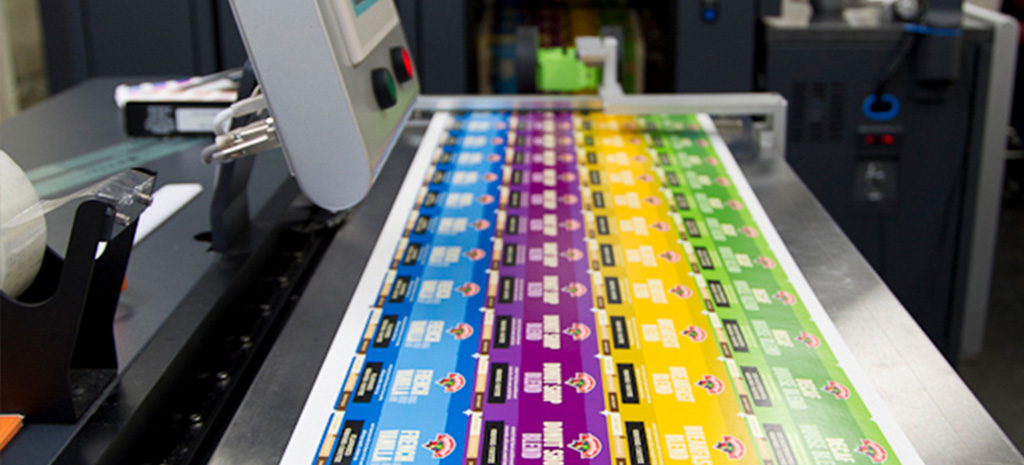Plate making in flexography is a crucial component in the printing process, providing the foundation for producing high-quality prints. Flexography, a versatile printing technique, relies heavily on effective plate production to ensure vibrant and accurate images and texts on diverse substrates. Understanding the nuances of this process can enhance print quality and efficiency, a significant advantage for marketing professionals seeking impressive results.
Whether you are an industry expert or new to flexography, this article delves into the intricate details of plate making and how it impacts the printing industry. Join us as we explore this vital component and its relevance to today’s dynamic market.

What is Flexography?
Flexography is a modern printing process that employs flexible plates. It’s commonly used for packaging and labeling due to its ability to print on various materials, including plastic, foil, and paper. To delve deeper into how flexographic printing works, you can find more information here.
The Importance of Plate Making in Flexography
At the heart of flexographic success is the plate making process. This stage determines the fidelity and consistency of the images that will appear on the final product. Marketing professionals understand the importance of these factors as they directly affect brand presentation and consumer perception.
The Basics of Plate Making
Plate making involves crafting a plate from a photopolymer, which is light-sensitive and flexible. The process first involves preparing artwork, followed by transferring the design onto a plate. The quality of this plate directly influences the print quality.
Steps in Plate Making
1. Preparing the Artwork
Before even considering plate production, it’s essential to ensure the artwork is ready for reproduction. This step involves digital manipulation to correct colors, adjust sizes, and manage various imaging elements.
2. Creating and Developing the Plate
The plate is then exposed to UV light after being coated with the artwork image. The exposure hardens some parts of the photopolymer, leaving other areas soft, which are then washed away to create a relief of the image.
3. Final Steps – Proofing and Approval
It’s crucial to check the plate for defects and to create print proofs for examination. Once approved, the plate is mounted on a press for the production run.
Technological Advances in Plate Making
With constant innovations in technology, the field of flexography has seen significant improvements. Advances such as digital plate making and laser technology have revolutionized traditional methods, ensuring better precision and quality. For those interested in wide web flexographic printing techniques, find more details here.
Benefits of Modern Techniques
The transition from older to cutting-edge techniques brings several benefits: improved efficiency, lower costs, and enhanced environmental impact due to a reduction in waste and energy consumption.
Challenges in Plate Making
While technological progress offers numerous advantages, it brings its set of challenges, including higher initial costs and the need for specialized knowledge to operate advanced machinery.
Best Practices for Effective Plate Making
Adhering to industry best practices is crucial for achieving optimal results. This involves regular machinery maintenance, continuous staff training, and investing in quality materials. Check out more on effective printing in this article.
Regular Quality Checks
Implementing routine quality checks ensures any issues are identified and resolved promptly, avoiding costly operational disruptions.
Impact of Plate Making on Flexographic Industry
Strategic emphasis on plate making elevates both print quality and operational efficiency. It fosters customer satisfaction, driving business success in an intensely competitive market.
Future Outlook
The future of plate making is set to witness further technological integration, leading to enhanced color accuracy, printer speed, and reduced environmental footprint.
Adapting to Market Demand
Industry professionals need to stay updated with trends and innovations to meet the ever-growing market demands and provide top-notch print quality.
Conclusion
Plate making in flexography proves to be an indispensable part of the printing process. Understanding and utilizing effective plate-making techniques are vital for achieving superior print quality. For professionals aiming for excellence in marketing material production, mastering this component offers a significant advantage. Dive into the nuances of digital versus traditional printing methods in our detailed guide here.

FAQs
1. What materials can flexography print on?
Flexography is versatile, allowing printing on a wide range of materials such as plastics, metals, papers, and more.
2. How does digital plate making differ from traditional methods?
Digital plate making enhances precision and reduces preparation time compared to traditional techniques, offering quicker and often more reliable results.
3. Why is plate accuracy essential in flexography?
Accuracy in plate making ensures that prints are crisp, clear, and true to the original artwork, maintaining high quality and customer satisfaction.






